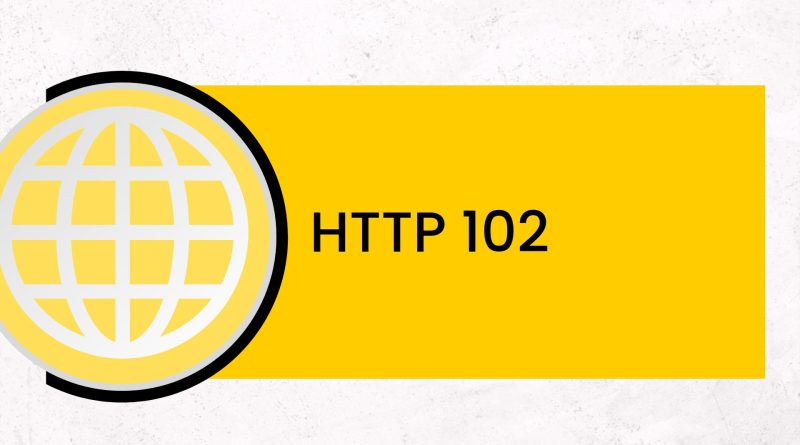HTTP 102: The Ultimate Guide to Fixing the Problem
Have you ever been browsing the internet and encountered a strange number code? Have you ever wondered what those numbers mean? Well, the answer is much simpler than you may think. The number code that you are seeing is an HTTP status code. These codes are sent back to your user agent (web browser) from a server and signify the status of your request. One such code is HTTP status code 102, which has unique implications for both website developers and end-users alike. In this article, we will explore what HTTP status code 102 means and how it can impact your online experience.
In this article, we will discuss how this particular status code works, as well as its implications for website developers and users alike. By understanding what this type of response means, developers can ensure their sites are providing a positive user experience while also staying up-to-date with current best practices.
What Is Http Status Code 102?
HTTP status code 102 is an informative response that lets the client know their request has been received and is being taken care of. It’s part of the Hypertext Transfer Protocol (HTTP) and it shows the server has accepted the request and is handling it. This code could be seen in numerous situations, such as web servers, email servers, and other systems that use HTTP for communication.
When a client tries to access a web page but needs extra data from another source before the page can be sent to them, an HTTP status code 102 tells them that their request has been received and is being processed. Additionally, if multiple requests are made at once and each one requires a substantial amount of time to process, a 102 code will let them know that their requests are being taken care of. So, an HTTP status code 102 is useful in several different scenarios, ensuring the client that their requests are being processed.
In these types of situations, it’s important for clients to understand what an HTTP status code 102 means so they can be aware that their requests are still being handled by the origin server. It also helps them to plan ahead in case they need to wait longer than expected before receiving responses or further instructions from the server. Knowing what this status code means can help ensure smoother communications between clients and servers.
Classifying Http Status Code 102
When considering HTTP status codes, it is essential to be familiar with their various classifications. For instance, code 102 is classified as a ‘Processing’ code, indicating that the server has received the request and is handling it, though the process is still ongoing.
It’s clear that understanding the different types of status codes is important for anyone in the know. But did you know that status code 102 is classified as ‘Processing’? This code means that the server has received the request and is currently dealing with it, but it has yet to be resolved.
The HTTP status codes system is a complex one, and having a thorough understanding of each type is invaluable. Thankfully, code 102 is easy to classify – it is a ‘Processing’ code which signifies the server has received the request and is dealing with it, but it has not been finalized.
The Processing class of codes can be used during long-running requests that might take several seconds or even minutes to complete. This is a useful status code when dealing with large amounts of data that require multiple steps before completion.
It’s also important to note that some servers may use this status code for other purposes besides long-running requests, so if you’re uncertain about how your server uses this code, you should consult your server documentation. Ultimately, knowing what type of HTTP status code you’re dealing with can help you better understand how to respond appropriately to requests from clients.
Difference Between Http Status Code 102 And Other Http Error Codes
When it comes to HTTP status codes, all of them can be confusing and difficult to decipher. But the code 102 is even more so. It’s not as common as some of the other error codes like 404 or 500, which many web users are familiar with. So what makes code 102 different from the others?
First off, code 102 indicates that the server is still processing a request made by the client. This means that the server has received a request but hasn’t been able to finish handling it yet. In contrast, a 404 error means that something wasn’t found on the server and a 500 error typically means there was an internal server problem or misconfiguration.
To summarize, an HTTP status code of 102 is used to indicate that the server has received a request and is still busy processing it. This is distinct from other errors such as 404 or 500 which signify something was not found on the server or there was an internal issue with it respectively.
Causes Of Http Status Code 102
HTTP Status Code 102 is an uncommon response code that indicates the server has received and is processing the request, but has yet to complete it. This response code can be seen as a middle ground between success and failure. It is different from other HTTP error codes in that it does not represent a problem with either the client or server.
This status code is usually triggered when the server receives a request and begins to process it, but then fails to finish due to various reasons. These can include lack of resources, long-running tasks, or incorrect configuration settings. In such cases, the server will pause processing the current request until it obtains more resources or completes its task.
Therefore, HTTP Status Code 102 should be considered an informational response from the server, notifying clients that their requests are being processed but have yet to complete. It is up to developers to determine how best to handle such responses in order for their applications to remain responsive and functional for users.
How To Fix Http Status Code 102
Unfortunately, this sort of error is tricky to fix due to its lack of a single source. But, there are several steps that can be taken to attempt a repair. To start, you should verify your internet connection speed and make sure it meets the lowest requirements of your website or application. If you employ a shared hosting provider, you should also confirm that their servers are running without any downtime or slow loading times. Lastly, you should inspect your firewall settings and make sure that they don’t obstruct any requests to reach the server.
Finally, if all else fails, contact your hosting provider or web developer for assistance. They should be able to investigate the issue further and provide a more detailed recommendation on how to resolve the problem. With their help, you should be able to get your website back up and running in no time!
Benefits Of Http Status Code 102
HTTP status code 102 is a crucial signal that the process is progressing. It’s beneficial for both the server and client – the client receives feedback that their request is being actioned, and the server can carry on with its job without being overloaded. This helps keep communication streamlined and efficient. In short, HTTP status code 102 is a great asset for efficient, effective communication.
HTTP status code 102 also has implications for security. By providing early feedback, clients are able to identify quickly if their request is taking too long or has been blocked from further processing due to a security issue. This helps protect against malicious attacks or unauthorized access attempts.
In summary, HTTP Status Code 102 can provide valuable benefits by improving communication between clients and servers, reducing server load and helping maintain security.
Conclusion
In conclusion, HTTP status code 102 is an important piece of web technology that can help users and developers alike. Understanding what this code is and how it differs from other HTTP error codes can help prevent and troubleshoot problems with a website or application. It’s also beneficial to know the causes of this code and how to both prevent and fix it. Adopting best practices for using HTTP status code 102 can ensure that users have a good experience on the site or application. Finally, there are various tools available to help troubleshoot any issues that may arise when using this code. Overall, understanding and utilizing HTTP status code 102 can be a powerful tool for creating a successful website or application.
All HTTP status codes by categories
Informational responses
(100 – 199)



